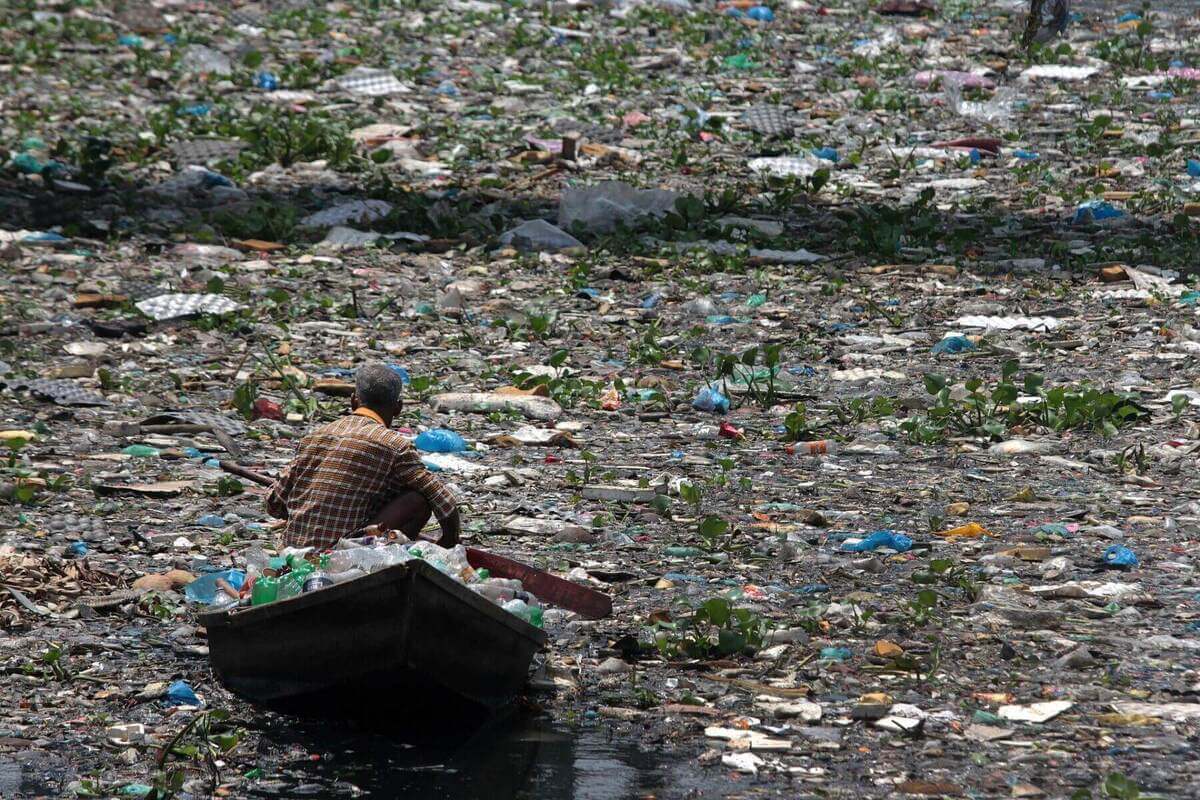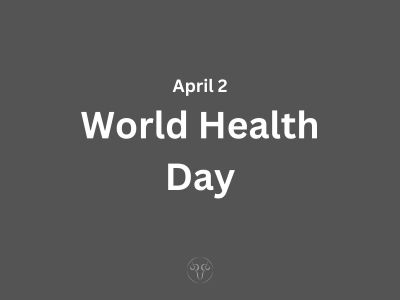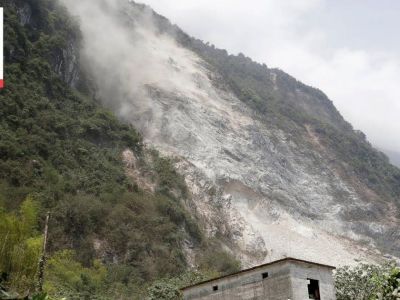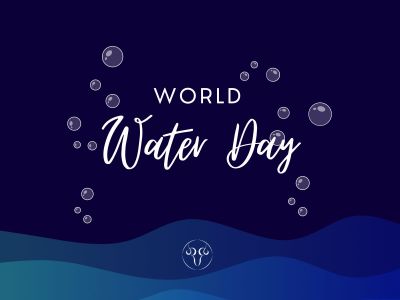Most Polluted Rivers

Water is essential natural resource for life to sustain which only make water Pollution is life threathening. The World Health Organisation (WHO) says that polluted water is water whose composition has been changed to the extent that it is unusable. In other words, it is toxic water that cannot be drunk or used for essential purposes like agriculture, and causes diseases like diarrhoea, cholera, dysentery, typhoid and poliomyelitis that kill more than 500k people worldwide every year. Today we are sharing list of the most polluted rivers in the world. Water pollution(or aquatic pollution) is the contamination of water bodies, usually as a result of human activities, so that it negatively affects its uses. Water pollution can be attributed to one of four sources: sewage discharges, industrial activities, agricultural activities, and urban runoff including stormwater. The waters of the River Ganges flow clear and clean through the Indian city of Rishikesh at the gateway to the Himalayas. In these mountains, nobody would guess that this water will be transformed into one of the most heavily polluted rivers in the world, with faecal bacteria levels up to 31 million per 100 millilitres.
Also Read List of 50 The Most Polluted cities of the world
The Most Polluted rivers in the world 2022-2023
1. Ganges River
(India, Bangladesh)
The 2,704 km (1,680 mi) river flows through India and Bangladesh. The Ganges-Brahmaputra-Meghna system is the third largest river on earth by discharge. The river’s ever-increasing pressure has resulted in the dumping of raw sewage into it, leading to its massive pollution. The Ganges is a lifeline to millions of people who live in its basin and depend on it for their daily needs. The river is home to approximately 140 species of fish, 90 species of amphibians, and also reptiles and mammals, including critically endangered species such as the gharial and South Asian river dolphin. The Ganges is also the most sacred river to Hindus, it only cause increase of total waste with drama. The Ganges is World's most polluted rivers.
2. Yellow River
(China)
After the Yangtze and the Yenisei, this is the third-longest river in Asia - and the sixth-longest river system in the world. The Yellow River or Huang He is the second-longest river in China, after the Yangtze River, and the sixth-longest river system in the world at the estimated length of 5,464 km (3,395 mi). On 25 November 2008, Tania Branigan of The Guardian filed a report "China's Mother River: the Yellow River", claiming that severe pollution has made one-third of China's Yellow River unusable even for agricultural or industrial use, due to factory discharges and sewage from fast-expanding cities. By 2022 it might be more than half of river is not suitable for most purposes. The Yellow river is World's second most polluted rivers.
3. Citarum
(Indonesia)
Near Indonesia’s capital, Jakarta, the Citarum river curves, choked with garbage and waste, supporting 30 million people who rely on it for agriculture, domestic, and personal uses. The Citarum River or in sudanese "Walungan Citarum" is the longest and largest river in West Java, Indonesia. It is the third longest river in Java, after Bengawan Solo and Brantas. It plays an important role in the life of the people of West Java. It has been noted for being considered one of the most polluted rivers in the world. and The Citarum is World's Third most polluted rivers.
4. Yangtze River
(China)
It carries up to 1.5 million tonnes of plastic into the sea every year. The Yangtze or Yangzi or Cháng Jiāng is the longest river in Asia, the third-longest in the world, and the longest in the world to flow entirely within one country. It rises from Tibetan Plateau) and flows 6,300 km (3,900 mi) in a generally easterly direction to the East China Sea and have seventh-largest river by discharge volume in the world. Its drainage basin comprises one-fifth of the land area of China, and is home to nearly one-third of the country's population sustain on it. The Yangtze river is fourth most polluted rivers in the world.
5. Indus River
(China, India, Pakistan)
Pakistan's longest river. Its basin covers about 384,000 square miles of open land, of which 204,000 lie in Pakistan. The Indus is second among a group of ten rivers responsible for about 90% of all the plastic that reaches the oceans. The Yangtze is the only river contributing more plastic than indus. The Indus is a transboundary river of Asia and a trans-Himalayan river of South and Central Asia. The 3,120 km (1,940 mi) river rises in mountain springs northeast of Mount Kailash in Western Tibet, flows northwest through the disputed region of Kashmir, bends sharply to the left after the Nanga Parbat massif, and flows south-by-southwest through Pakistan, before emptying into the Arabian Sea near the port city of Karachi. The Indus is Fifth Most Polluted rivers of the world.
6. Yamuna River
(India)
This is the second most polluted river of India after the Ganges and sixth in the world The major issue is the poor management of raw and industrial sewage by the Indian government. There are few functional sewage plants in the city of New Delhi, which dampens the glory of the big capital city. The Yamuna or jamuna is the second-largest tributary river of the Ganges by discharge and the longest tributary in India. Originating from the Yamunotri Glacier at a height of about 4,500 m (14,800 ft). The water quality in "Upper Yamuna", as 375 kilometres (233 mi) long stretch of Yamuna is "reasonably good quality" till Wazirabad barrage in Delhi. After this, the discharge of wastes in Delhi renders the river severely polluted, only 22 km stretch of Yamuna in Delhi, is less than 2% of Yamuna's total length but accounts for nearly 80% of the total pollution in the river. There are four main causes of Yamuna's pollution in Delhi: poor quality of water released by the effluent treatment plants, household and municipal disposal sites, soil erosion and fertilizers, herbicides, pesticides and run-off from commercial activity and industrial sites.
7. Nile River
(the Democratic Republic of the Congo, Tanzania, Burundi, Rwanda, Uganda, Kenya, Ethiopia, Eritrea, South Sudan, Republic of the Sudan, and Egypt)
The Nile is a major north-flowing river in northeastern Africa. It flows into the Mediterranean Sea. The Nile is the longest river in Africa and Commonly regarded as the longest river in the world, its basin covers 11 countries including the Democratic Republic of the Congo, Tanzania, Burundi, Rwanda, Uganda, Kenya, Ethiopia, Eritrea, South Sudan, Republic of the Sudan, and Egypt. In Egypt, when the most common diseases are reported to be bacterial diarrhea, typhoid fever, and schistosomiasis, all of which have a connection to unsafe water and poor sanitation, then it is clear that the focus must shift towards one source: the Nile. Nile is Seventh mosth Polluted rivers in the world.
8. Pasig River
(Philippines)
Pasig is World's Eighth most polluted river. The Pasig River or Ilog Pasig is a water body in the Philippines that connects Laguna de Bay to Manila Bay. Stretching for 25.2 kilometers (15.7 mi), it bisects the Philippine capital of Manila and its surrounding urban area into northern and southern halves. The total drainage basin of the Pasig River, including the basin of Laguna de Bay, covers 4,678 square kilometers (1,806 sq mi). After World War II, massive population growth, infrastructure construction, and the dispersal of economic activities to Manila's suburbs left the river neglected. Industrialization had already polluted the river. Slums and suburbs swarm the banks of the Pasig river, in Manila, the capital of the Philippines. This concentration of poor popuplation directly contributes to the river’s waste. Sewage and garbage introduced on daily basic into the river.
9. Niger River
(Benin, Guinea, Mali, Niger, Nigeria)
This is the principle river of western Africa, running through Guinea, Mali, Niger, Benin and Nigeria. The Niger River is the main river of West Africa, extending about 4,180 km (2,600 mi). Its drainage basin is 2,117,700 km2 (817,600 sq mi) in area. Its source is in the Guinea Highlands in southeastern Guinea near the Sierra Leone border. Niger is World's nineth most polluted river.
10. Murray-Darling River
(Australia)
The health of the River Murray is critical to the current and future wellbeing of South Australia. The Murray River or Millewa is a river in Southeastern Australia. It is Australia's longest river at 2,508 km (1,558 mi) extent. Together with its tributaries of the river Murray, the catchments of these rivers form the Murray–Darling basin, which covers about one-seventh the area of Australia. Water quality is generally good throughout the Basin but can be compromised by a number of threats, including high salinity, blue-green algal blooms, low dissolved oxygen levels, nutrients, bushfires and turbidity. This make it tenth most polluted river.
11. River Danube
(Germany, Austria, Slovakia, Hungary, Croatia, Serbia, Romania, Bulgaria, Moldova, and Ukraine)
A wide-ranging global study has identified the Danube as the river with the highest concentration of antibiotics in Europe and the single most polluted on the continent. Chemical waste is its great enemy, and it is not just farming pesticides but waste from Serb factories bombarded as of 1999. The Danube begins in Germany and snakes through nine other countries, covering 2,850(1,770 mi) kilometers, before draining into the Black Sea. The largest cities on the river are Vienna, Budapest, Belgrade and Bratislava, all of which are the capitals of their respective countries.
12. Mississippi River
(USA)
The Mississippi river is one of the longest rivers in the world. It serves millions of US residents. The river is brown in color, owing to the constant release of waste into the river. The marine life in the river has reduced alarmingly due to various oil spillages in the past. More waste comes from industries and farmers who use harmful chemicals and release them into the river.
The Mississippi River is the second-longest river and chief river of the second-largest drainage system in North America, second only to the Hudson Bay drainage system. From its traditional source of Lake Itasca in northern Minnesota, it flows generally south for 2,340 miles (3,770 km)
13. Río de la Plata
(Argentina and Uruguay)
The Río de la Plata or river of silver also called called River Plate or Platine River is the estuary formed by the confluence of the Uruguay River and the Paraná River at Punta Gorda. The River Plate is the second biggest watercourse in South America. Tipping of industrial waste and waste disposal by neighborhood communities is an major source of pollution of this river. In last few years, the sluicing of the water with chemical waste from farming activities has also increased, including it in the list of most polluted rivers on the planet. It empties into the Atlantic Ocean and forms a funnel-shaped indentation on the southeastern coastline of South America. Depending on the geographer, the Río de la Plata may be considered a river, an estuary, a gulf, or a marginal sea. If considered a river, it is the widest in the world, with a maximum width of 220 kilometres (140 mi).
14. Mekong River
(China, Myanmar, Laos, Thailand, Cambodia, Vietnam)
The Mekong or Mekong River is a trans-boundary river in East Asia and Southeast Asia. It is the world's twelfth longest river and the third longest in Asia. Its estimated length is 4,909 km (3,050 mi), and it drains an area of 795,000 km2 (307,000 sq mi), discharging 475 km3 (114 cu mi) of water annually. From the Tibetan Plateau the river runs through China, Myanmar, Laos, Thailand, Cambodia, and Vietnam. The extreme seasonal variations in flow and the presence of rapids and waterfalls in the Mekong make navigation difficult. Even so, the river is a major trade route between western China and Southeast Asia.
15. Amur River
(Russia, China)
The Amur or Heilong Jiang, Hēilóng Jiāng, "Black Dragon River" is the world's tenth longest river. The Amur proper is 2,824 kilometres (1,755 mi) long, and has a drainage basin of 1,855,000 km2 (716,000 sq mi). The largest fish species in the Amur is the kaluga, attaining a length as great as 5.6 metres (18 ft). The river basin is home to a variety of large predatory fish such as northern snakehead, Amur pike, taimen, Amur catfish, predatory carp and yellowcheek, as well as the northernmost populations of the Amur softshell turtle and Indian lotus. Many Amur tributaries are polluted with insufficiently-treated household, agricultural and industrial sewage and mining wastes, which contain arsenic, heavy metals (lead, copper, zinc, etc.), and. The Amur is most heavily polluted in its lower reaches.
16. Pearl River
(China)
The Pearl River or Zhujiang or the Canton River, is an extensive river system in southern China. The name "Pearl River" is also often used as a catch-all for the watersheds of the Xi ("West"), Bei ("North"), and Dong ("East") rivers of Guangdong. Measured from the farthest reaches of the Xi River, the 2,400-kilometer-long (1,500 mi) Pearl River system is China's third-longest river, after the Yangtze River and the Yellow River, and second largest by volume, after the Yangtze. China's third longest river, became highly polluted, with many of its tributaries worse than the lowest national surface water quality standard, and unfit as a drinking water source.
17. River Salween
(China, Myanmar, Thailand)
The Salween is seen as one of the the most polluted river on the planet, so much so that some fishing communities have abandoned their former trade to sell the glass and plastic they collect from the river. The Salween is a Southeast Asian river, about 3,289 kilometres (2,044 mi) long, flowing from the Tibetan Plateau south into the Andaman Sea. The Salween flows primarily within southwest China and eastern Myanmar (Burma), with a short section forming the border of Burma and Thailand. Throughout most of its course, it runs swiftly through rugged mountain canyons. Despite the river's great length, only the last 90 km (56 mi) are navigable, where it forms a modest estuary and delta at Mawlamyine. The river is known by various names along its course, including Thanlwin in Burma and Nu River in China. The commonly used spelling "Salween" is an anglicisation of the Burmese name dating from 19th-century British maps.
18. Rio Grande
(United States, Mexico)
The Río Grande is the second biggest watercourse in the United States. Two decades ago, many Mexican border communities treated little or no wastewater and instead dumped it into the Rio Grande. Its basin is increasingly polluted by the tipping industrial waste. The Rio Grande, known in Mexico as the Río Bravo del Norte or simply the Río Bravo, is one of the principal rivers (along with the Colorado River) in the southwestern United States and in northern Mexico. The length of the Rio Grande is 1,896 miles (3,051 km). It originates in south-central Colorado, in the United States, and flows to the Gulf of Mexico. The Rio Grande drainage basin has an area of 182,200 square miles (472,000 km2); however, the endorheic basins the total drainage-basin area to 336,000 square miles (870,000 km2). Perez's town is one of many along the Texas-Mexico border where water supplies are threatened by persistent pollution in the Rio Grande, due, in part, to raw sewage coming from Nuevo Laredo in Mexico.
19. Kaveri River
(India)
The Kaveri or Cauvery or Kaviri (in ancient Tamilakam) is one of the major Indian rivers flowing through the states of Karnataka and Tamil Nadu. It is the third largest river – after Godavari and Krishna – in southern India, and the largest in the State of Tamil Nadu, which, on its course, bisects the state into north and south. In ancient Tamil literature, the river was also called Ponni (the golden maid, in reference to the fine silt it deposits). Most of its contamination is human waste and industrial waste specifically pharmaceuticals industry.
20. Jordan River
(Jordan, Israel, Syria, Palestine)
The source of the river is clean and fit for human consumption. However, as the river flows, it increases in toxicity due to the many waste disposals. This has caused an increase in the salinity of the water. Most of the pollution comes from the refugee crisis in the country, coupled with the increase in the population, both local and international. The Jordan River or River Jordan (Arabic: نَهْر الْأُرْدُنّ, Nahr al-ʾUrdunn, Hebrew: נְהַר הַיַּרְדֵּן, Nəhar hayYardēn; Classical Syriac: ܢܗܪܐ ܕܝܘܪܕܢܢ Nahrāʾ Yurdnan), also known as Nahr Al-Sharieat (Arabic: نهر الشريعة), is a 251-kilometre-long (156 mi) river in the Middle East that flows roughly north to south through the Sea of Galilee (Hebrew: כנרת Kinneret, Arabic: Bohayrat Tabaraya, meaning Lake of Tiberias) and on to the Dead Sea. Jordan and the Golan Heights border the river to the east, while the West Bank and Israel lie to its west. Both Jordan and the West Bank take their names from the river.
21. Tijuana River
(Mexico, United States)
The Tijuana River flows north through the Tijuana River Valley, passing through Tijuana, Mexico. This river runs 120 miles, and at times carries only a little water. The river is quite contaminated and polluted due to the millions of US gallons of sewage being dumped into it every year. The Tijuana River (Spanish: Río Tijuana) is an intermittent river, 120 mi (195 km) long, near the Pacific coast of northern Baja California state in northwestern Mexico and Southern California in the western United States. The river is heavily polluted with raw sewage from the city of Tijuana, Mexico.
22. Mantaza-Riachuelo River
(Argentina)
The river is based in Argentina and is arguably the most polluted river in Latin America. The Matanza basin is the most polluted river in Latin America and it is considered one of the ten most polluted Waterbodies globally, with very high levels of lead. One of the main reasons why it is polluted is that the river receives large amounts of industrial waste from the numerous factories along the river, especially tanneries. Among the most dangerous contaminants are heavy metals and waste water from the basin's saturated layers. The Matanza River or Río de la Matanza or Río Matanza ("slaughter river"), is a 64-kilometre (40 mi) stream in Argentina that originates in the Buenos Aires Province and defines the southern boundary of the Buenos Aires federal district. It empties into the Río de la Plata between Tandanor and Dock Sud. The La Boca neighbourhood and the Boca Juniors football club are located near the Riachuelo's mouth. The Spanish word boca means "mouth".
23. Buringanga River
(Bangladesh)
The Buriganga River or Old Ganges is a river in Bangladesh which flows past the southwest outskirts of the capital city, Dhaka. Its average depth is 7.6 metres (25 ft) and its maximum depth is 18 metres (58 ft). It ranks among the most polluted rivers in the country. Today, the Buriganga river is afflicted by the noisome problem of pollution. The chemical waste of mills and factories, household waste, medical waste, sewage, dead animals, plastics, and oil are some of the Buriganga's pollutants. The city of Dhaka discharges about 4,500 tons of solid waste every day and most of it is released into the Buriganga. According to the Department of Environment, 21,600 cubic metres (5.7 million US gallons) of toxic waste are released into the river by the tanneries every day.
24. Sarno River
(Italy)
The Sarno, known as Sarnus, is a stream that passes through Pompeii to the south of the Italian city of Naples. It is considered the most polluted river in Europe. It flows about 24 kilometres (15 mi) from the base of Mt. Sarno to the Bay of Naples collecting water from the Solofrana and Cavaiola tributaries during the course of its flow. The Sarno is one the most polluted rivers in Europe, due to agricultural waste and insufficiently treated industrial waste water. There are more than 500 small-medium industrial units in the area which still emit pollute. Water treatment plants have been installed, however, they do not work to full capacity. The mouth of the river continues to make bathing in the sea impossible, despite numerous protests.
25. Doce River
(Brazil)
The Doce River or sweet river is a river in southeast Brazil with a length of 853 kilometres (530 mi). The river basin is economically important. In 2015 the collapse of a dam released highly contaminated water from mining into the river, causing an ecological disaster. However, in November 2015, the river was contaminated by 60 million cubic meters of iron ore sludge from two containment dams that ruptured.
Effects of River Water Pollution
The following are the effects of water pollution:
- River Water pollution impacts human health on continual basis; in fact, it can be lethal. In 2015, a study revealed that waterborne illnesses caused 1.8 million deaths worldwide yearly.
- Due to contamination of water, it can cause many water bourne diseases like diahorrea or cholera.
- Water pollution cause a phenomenon called eutrophication and dammaging ecosystem and environment. This can cause fish and other aquatic organisms to die due to change in their habitat to degree unhabitable.
- Industrial waste negatively impact all life altogether whether human or plants or animals.
- Water pollution also accumulate chemicals into the soil that impact the growth of plants or other food crops and cause them not safe for consumption.
Things you can do to help reduce Water Pollution:
- Do not introduce solid waste to water system.
- Do not use chemical fertilizer for lawn garden.
- Do not put your medicine, drugs and other chemicals in drainage system. Dispose them Properly.
- Do Not Pour Fat and Grease Down the Drain.
- Use Phosphate-Free Detergent and Dish Cleaner.
- Check Your House Drainage system.
- Report any illegal waste disposal activity specially of industrial scale. Integrate it in culture.









